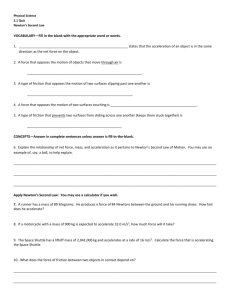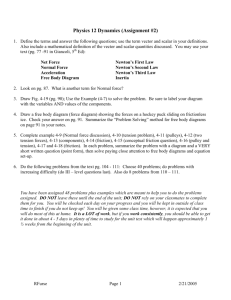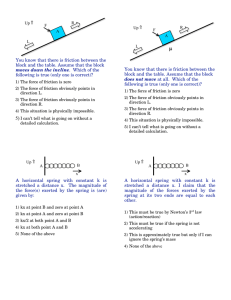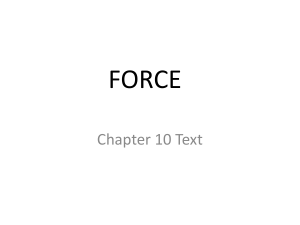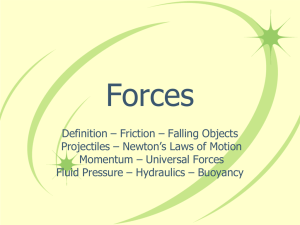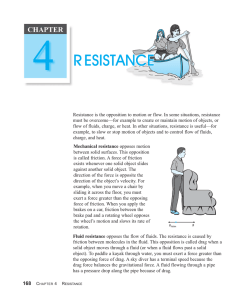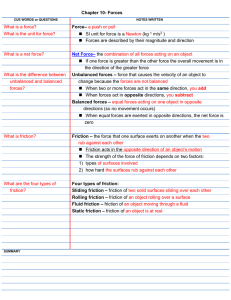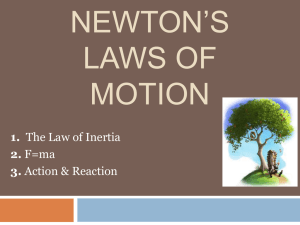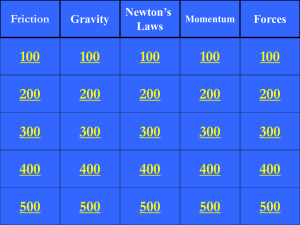Forces and Motion
advertisement
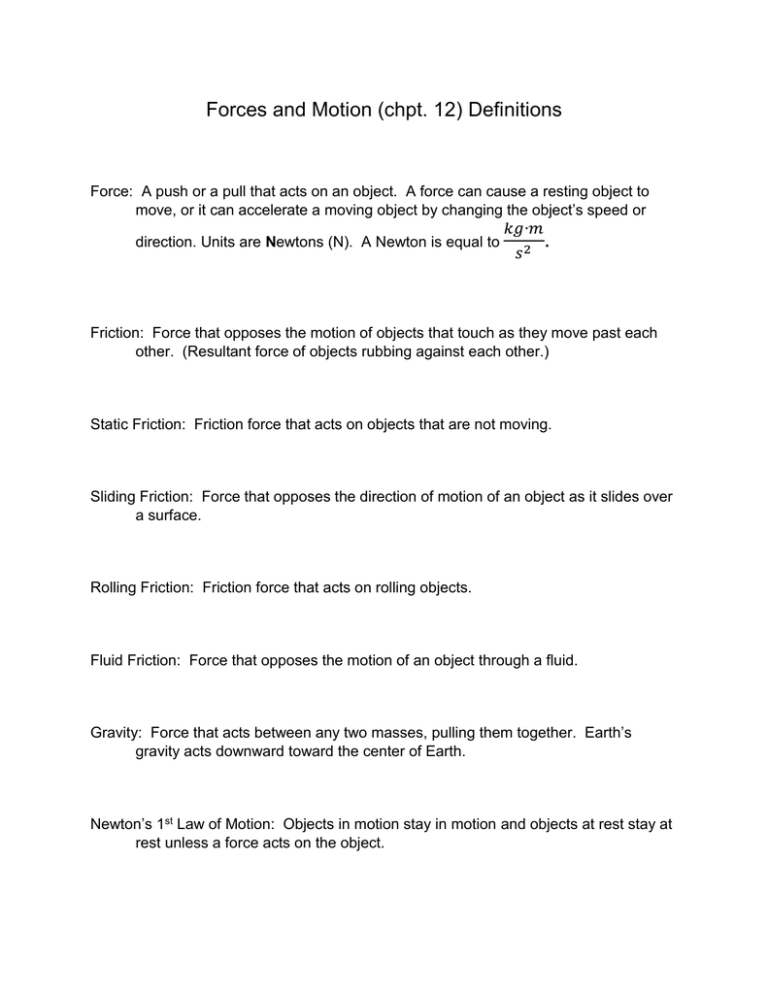
Forces and Motion (chpt. 12) Definitions Force: A push or a pull that acts on an object. A force can cause a resting object to move, or it can accelerate a moving object by changing the object’s speed or direction. Units are Newtons (N). A Newton is equal to 𝑘𝑔∙𝑚 𝑠2 . Friction: Force that opposes the motion of objects that touch as they move past each other. (Resultant force of objects rubbing against each other.) Static Friction: Friction force that acts on objects that are not moving. Sliding Friction: Force that opposes the direction of motion of an object as it slides over a surface. Rolling Friction: Friction force that acts on rolling objects. Fluid Friction: Force that opposes the motion of an object through a fluid. Gravity: Force that acts between any two masses, pulling them together. Earth’s gravity acts downward toward the center of Earth. Newton’s 1st Law of Motion: Objects in motion stay in motion and objects at rest stay at rest unless a force acts on the object. Inertia: Tendency of an object to resist a change in motion. Newton’s 2nd Law of Motion: F = m * a Force equals mass times acceleration. Newton’s 3rd Law of Motion: Whenever one object exerts a force on a second object, the second object exerts an equal and opposite force back. Action/Reaction pairs of force. Momentum: M = m * v Momentum is mass times velocity. Units of momentum are 𝑘𝑔∙𝑚 𝑠 Universal Forces: Universal forces include electromagnetic forces, nuclear forces, and gravitational force.

